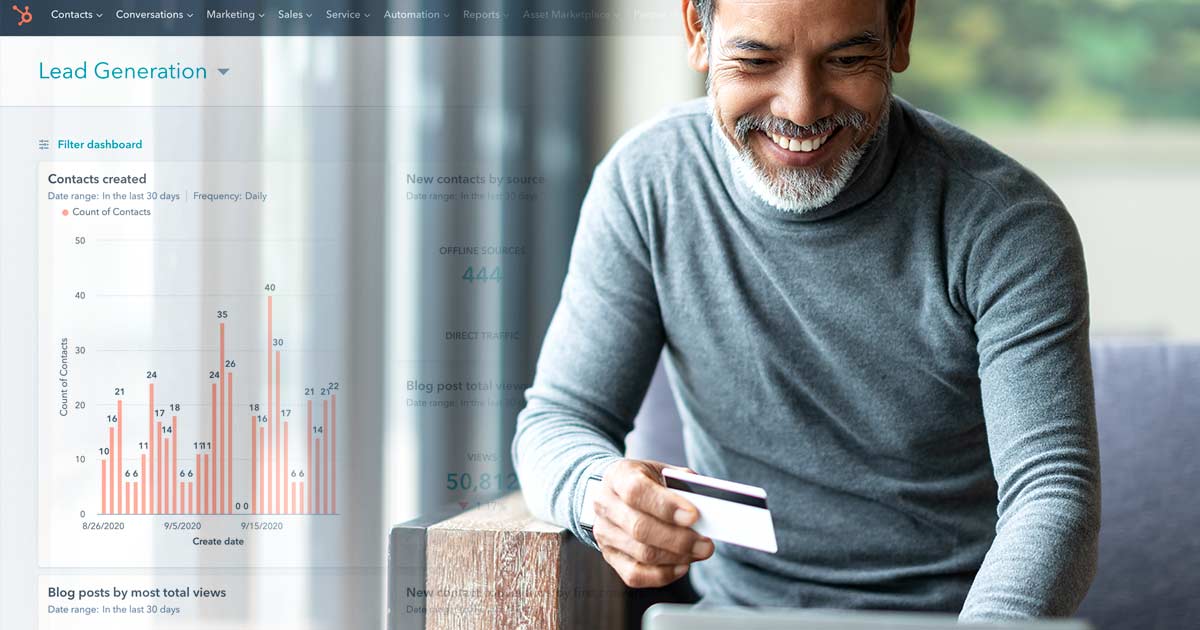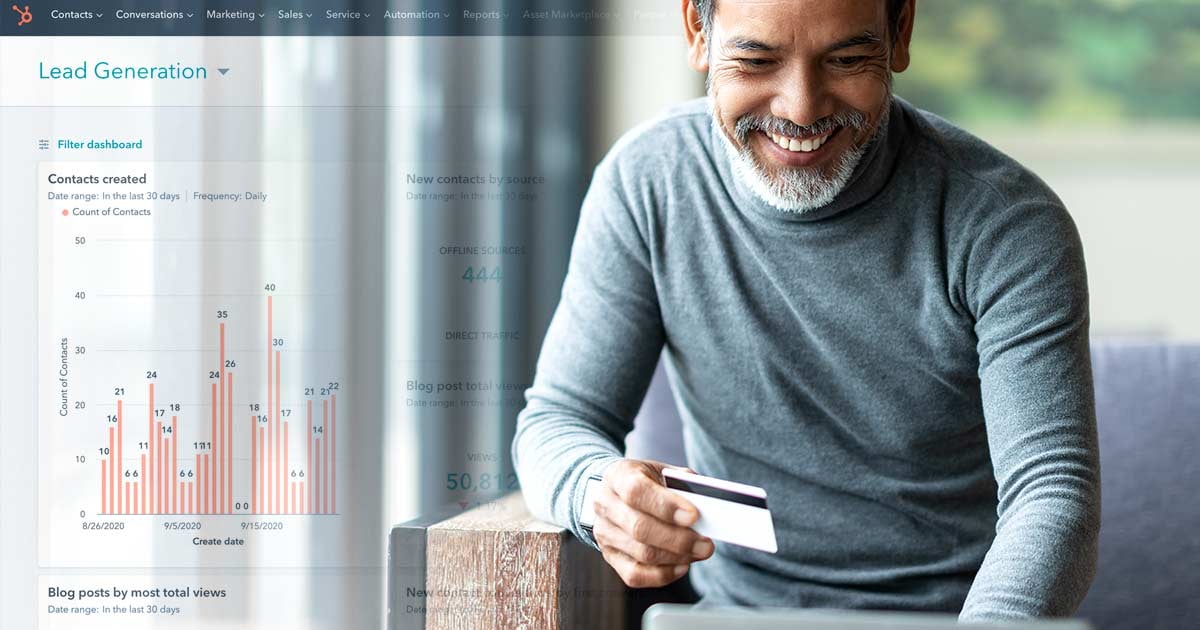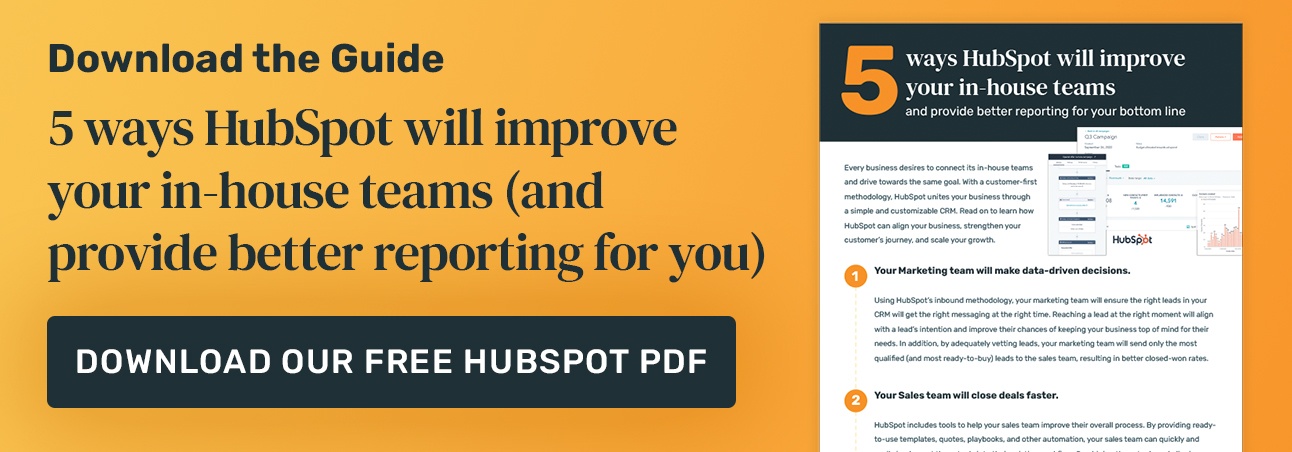Understanding HubSpot lifecycle stages

As marketers, we all want to attract and convert prospects into loyal customers. However, not all of our leads will be interested in buying from us immediately. This is where understanding the HubSpot lifecycle stages comes in handy. By segmenting your leads based on where they are in the buying process, you can tailor your marketing efforts to meet their specific needs and interests.
The importance of lifecycle stages in inbound marketing
Inbound marketing is a crucial strategy for businesses to attract, engage, and delight prospects and customers. However, to effectively achieve this, it's essential to have a system in place that identifies where a lead is in the buying process. This is where lifecycle stages come in handy. Lifecycle stages are the seven stages that a lead goes through, from being a stranger to becoming a promoter of your brand. By understanding which stage a lead is in, you can create targeted content and campaigns that will resonate with them and ultimately move them down the funnel.
Aligning sales and marketing efforts
One of the most significant benefits of lifecycle stages is the alignment it creates between sales and marketing teams. By defining leads' stages, you can ensure that your sales and marketing teams are on the same page about what messaging and content are appropriate for each lead. This alignment helps both teams work together to create more personalized and effective outreach, ultimately increasing conversions.
For example, if a lead is in the consideration stage, your marketing team can create content that addresses their pain points and provides solutions. At the same time, your sales team can use this information to have more informed conversations with the lead, providing them with the necessary information to make a purchase decision.
Personalizing customer experiences
Once a lead becomes a customer, it's essential to continue to tailor your experience to their needs and interests. By segmenting your customers based on their stage, you can create targeted campaigns that are more likely to resonate with them, leading to increased customer satisfaction and loyalty.
For instance, if a customer is in the loyalty stage, you can create campaigns that reward them for their loyalty, such as exclusive offers or personalized content. This approach can help you retain customers and turn them into brand advocates, helping you attract more leads and increase revenue.
Measuring marketing success
Being able to measure the success of your marketing efforts is crucial. By segmenting leads and customers based on their stage, you can track their progression through the funnel and understand the impact of your campaigns on driving conversions. This insight can help you refine your marketing efforts and improve ROI.
For example, if you notice that a particular campaign is not performing well in the consideration stage, you can adjust your messaging and content to better address the pain points and needs of leads in that stage. This approach can help you improve your conversion rates and increase your bottom line.
Lifecycle stages are a crucial aspect of inbound marketing that can help you attract, engage, and delight your prospects and customers. By aligning your sales and marketing efforts, personalizing customer experiences, and measuring marketing success, you can create a more effective and efficient marketing strategy that drives revenue and growth for your business.

Overview of HubSpot lifecycle stages
Understanding the default HubSpot lifecycle is crucial to effectively implementing a lifecycle strategy. The lifecycle is made up of seven stages, each with its own unique characteristics and goals. Let's take a closer look at each stage.
1. Subscriber
The subscriber stage is the first stage in the HubSpot lifecycle. A subscriber is someone who has shown interest in your company by opting to receive your marketing communications but hasn't taken any further action yet. This stage is all about enticement. You want to provide subscribers with valuable and relevant content that will inspire them to become leads. This can include blog posts, e-books, webinars, and more.
2. Lead
The lead stage is where things start to get interesting. A lead is someone who has given you their contact information and expressed interest in your company's offerings. The goal of this stage is to move the lead further down the funnel by educating them about your product or service and addressing any objections they may have. This can include personalized email campaigns, targeted content, and more.
3. Marketing Qualified Lead (MQL)
Once a lead has been sufficiently educated and engaged, they may become a marketing qualified lead (MQL). An MQL is a lead who has met a specific set of criteria that qualifies them as being more likely to become a customer. The goal of this stage is to nurture the MQL with targeted content and campaigns that will encourage them to take the next step towards becoming a customer. This can include personalized email campaigns, targeted content, and more.
4. Sales Qualified Lead (SQL)
If an MQL is deemed a good fit for your company by a sales rep, they may become a sales qualified lead (SQL). The goal of this stage is to move the SQL through the sales process and close the deal. This can include personalized sales outreach, product demos, and more.
5. Opportunity
If a lead has expressed interest in becoming a customer and is currently in the sales process, they may become an opportunity. The goal of this stage is to close the deal and turn the opportunity into a customer. This can include negotiations, contract agreements, and more.
6. Customer
Once a lead has become a customer, the goal of this stage is to provide a seamless and positive customer experience. This includes onboarding, customer support, and more. A positive customer experience increases the likelihood of repeat business and referrals.
7. Evangelist
An evangelist is a loyal customer who advocates for your brand and refers new business to you. The goal of this stage is to continue to create a positive customer experience that turns customers into evangelists. This can include loyalty programs, referral incentives, and more.
Align your sales and marketing efforts with HubSpot's lifecycle stages
As marketers, it's essential to attract and convert prospects into loyal customers. However, not all leads will be interested in buying from you immediately. This is where understanding the HubSpot lifecycle stages comes in handy.
By segmenting your leads based on where they are in the buying process, you can tailor your marketing efforts to meet their specific needs and interests. This approach can help you align your sales and marketing efforts, personalize customer experiences, and measure marketing success.
Understanding the seven stages of the HubSpot lifecycle, from the subscriber to the evangelist, can help you create a more effective and efficient marketing strategy that drives revenue and growth for your business.
Ready to learn more? Check out our marketing tips on how to properly use lifecycle stages in HubSpot.
May 7, 2023
